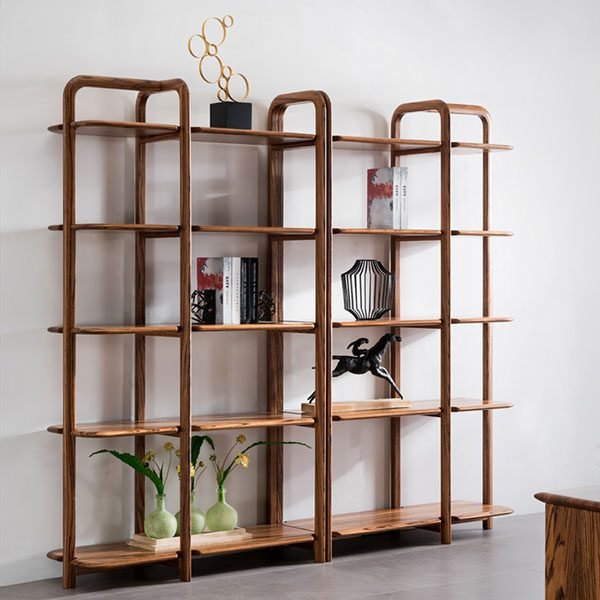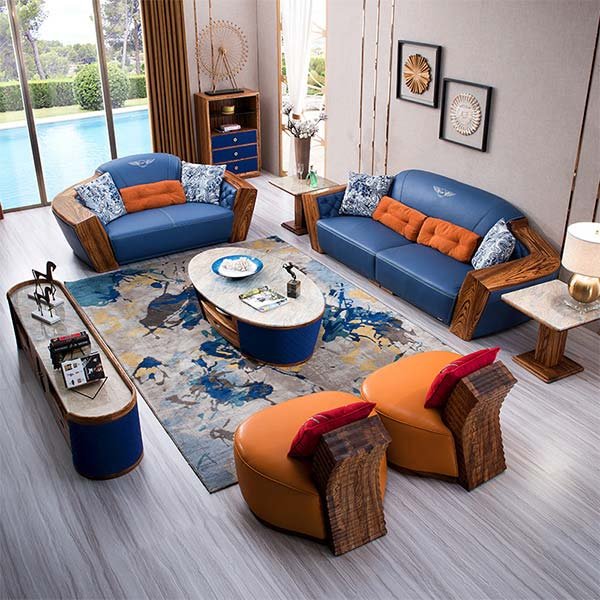“Maximize space, minimize clutter – arrange your living room furniture with style and function in mind!”
Utilize multi-functional furniture
Arranging furniture in a small living room can be a challenging task. Limited space requires careful planning and strategic placement of furniture to maximize functionality and create a visually appealing layout. One effective way to make the most of a small living room is to utilize multi-functional furniture.
Multi-functional furniture serves a dual purpose, providing both storage and seating solutions in one piece. For example, a storage ottoman can serve as a coffee table, extra seating, and a place to store blankets or magazines. A sofa bed is another great option for small spaces, offering a comfortable place to sit during the day and a bed for overnight guests.
When selecting multi-functional furniture for your small living room, consider the scale and proportion of each piece. Choose furniture that is appropriately sized for the space to avoid overcrowding. Opt for pieces with clean lines and simple designs to create a sense of openness and airiness in the room.
In addition to multi-functional furniture, consider incorporating pieces that can be easily moved or rearranged to suit your needs. Lightweight chairs, nesting tables, and rolling carts can be repositioned as needed to accommodate different activities or guests. This flexibility allows you to make the most of your small living room without feeling constrained by fixed furniture arrangements.
Another way to maximize space in a small living room is to think vertically. Utilize wall-mounted shelves, floating cabinets, and tall bookcases to take advantage of vertical space and free up floor space. This not only provides additional storage options but also creates a sense of height and openness in the room.
When arranging furniture in a small living room, consider the flow of traffic and the function of each area. Create distinct zones for different activities, such as seating areas for conversation, a reading nook, or a media center. Arrange furniture in a way that allows for easy movement between these zones while maintaining a cohesive and balanced layout.
To visually expand the space in a small living room, choose furniture in light colors and reflective materials. Lighter hues create a sense of openness and brightness, while mirrors and glass surfaces can help bounce light around the room. Avoid heavy, dark furniture that can make the space feel cramped and claustrophobic.
In conclusion, arranging furniture in a small living room requires thoughtful planning and creative solutions. By utilizing multi-functional furniture, thinking vertically, and creating distinct zones for different activities, you can make the most of your limited space. With careful consideration of scale, proportion, and flow, you can create a functional and stylish living room that feels spacious and inviting.
Create a focal point
Arranging furniture in a small living room can be a challenging task, but with the right strategies, you can make the most of the space you have. One key tip is to create a focal point in the room. This will help to draw the eye and make the space feel more cohesive.
One way to create a focal point is to arrange your furniture around a central piece, such as a fireplace or a large piece of artwork. This will help to anchor the room and give it a sense of balance. If you don’t have a natural focal point in the room, you can create one by using a bold piece of furniture, such as a brightly colored sofa or a statement coffee table.
Another way to create a focal point is to use lighting. A well-placed floor lamp or pendant light can draw attention to a specific area of the room and make it feel more inviting. You can also use a rug to define a focal point, such as a seating area or a reading nook.
When arranging furniture around a focal point, be sure to leave enough space for traffic flow. You don’t want the room to feel cramped or cluttered, so make sure there is enough room to move around comfortably. Consider the scale of your furniture and how it fits in the space – oversized pieces can make a small room feel even smaller.
In addition to creating a focal point, it’s important to consider the layout of the room as a whole. Think about how you use the space and what activities you do in the room. For example, if you like to entertain guests, you may want to create a seating area that encourages conversation. If you use the room for watching TV, make sure the furniture is arranged in a way that allows everyone to see the screen comfortably.
One popular layout for small living rooms is the “floating” furniture arrangement. This involves placing the furniture away from the walls to create a more open and airy feel. By floating the furniture, you can create distinct zones in the room, such as a seating area and a reading nook. This layout also allows for more flexibility in arranging the furniture and can make the room feel larger.
When arranging furniture in a small living room, it’s important to think about scale and proportion. Choose furniture that fits the space and doesn’t overwhelm it. Consider using multi-functional pieces, such as a storage ottoman or a sofa bed, to maximize the space. And don’t be afraid to experiment with different layouts until you find one that works for you.
In conclusion, arranging furniture in a small living room requires careful planning and consideration. By creating a focal point, thinking about the layout of the room, and paying attention to scale and proportion, you can make the most of your space and create a comfortable and inviting environment. With these tips in mind, you can transform your small living room into a stylish and functional space that meets your needs.
Use mirrors to create the illusion of space
Arranging furniture in a small living room can be a challenging task, but with the right techniques, you can make the most of the space you have. One effective way to create the illusion of space in a small living room is by using mirrors. Mirrors can help to reflect light and make the room feel larger and more open.
When using mirrors to create the illusion of space in a small living room, it’s important to strategically place them in the room. One effective way to do this is by placing a large mirror on one of the walls. This will help to reflect light and create the illusion of depth in the room. You can also place smaller mirrors on other walls to further enhance the feeling of space.
Another way to use mirrors to create the illusion of space in a small living room is by placing them opposite a window. This will help to reflect natural light into the room and make it feel brighter and more open. You can also place mirrors behind furniture to create the illusion of depth and make the room feel larger.
In addition to using mirrors, you can also use light-colored furniture and accessories to create the illusion of space in a small living room. Light colors can help to reflect light and make the room feel larger and more open. You can also use furniture with legs to create the illusion of space, as this will make the room feel more airy and spacious.
When arranging furniture in a small living room, it’s important to keep the layout open and uncluttered. Avoid placing furniture against the walls, as this can make the room feel cramped and closed off. Instead, try to create a conversation area in the center of the room with the furniture facing each other.
You can also use multi-functional furniture to maximize space in a small living room. For example, a coffee table with storage can help to keep clutter at bay and make the room feel more organized. You can also use ottomans or benches that can double as extra seating or storage.
When arranging furniture in a small living room, it’s important to consider the flow of the room. Make sure there is enough space to move around comfortably and that the furniture is not blocking any pathways. You can also use area rugs to define different areas in the room and create a sense of separation.
In conclusion, arranging furniture in a small living room can be a challenge, but with the right techniques, you can make the most of the space you have. By using mirrors, light-colored furniture, and multi-functional pieces, you can create the illusion of space and make your small living room feel larger and more open. Remember to keep the layout open and uncluttered, and consider the flow of the room when arranging furniture. With these tips, you can create a stylish and functional living room in a small space.
Заключение
Arrange furniture in small living rooms by creating a focal point, maximizing vertical space, using multipurpose furniture, and keeping the layout open and airy.



